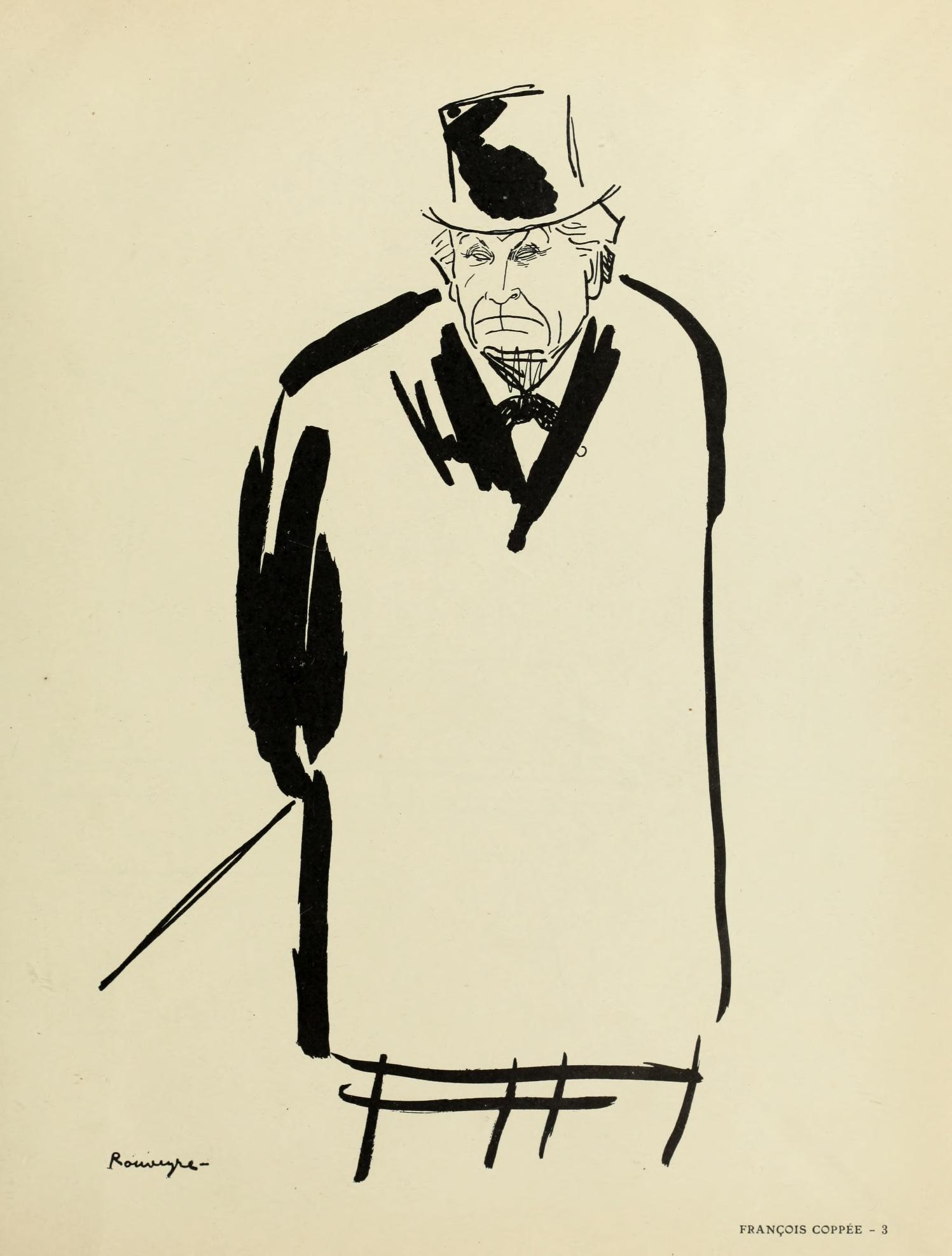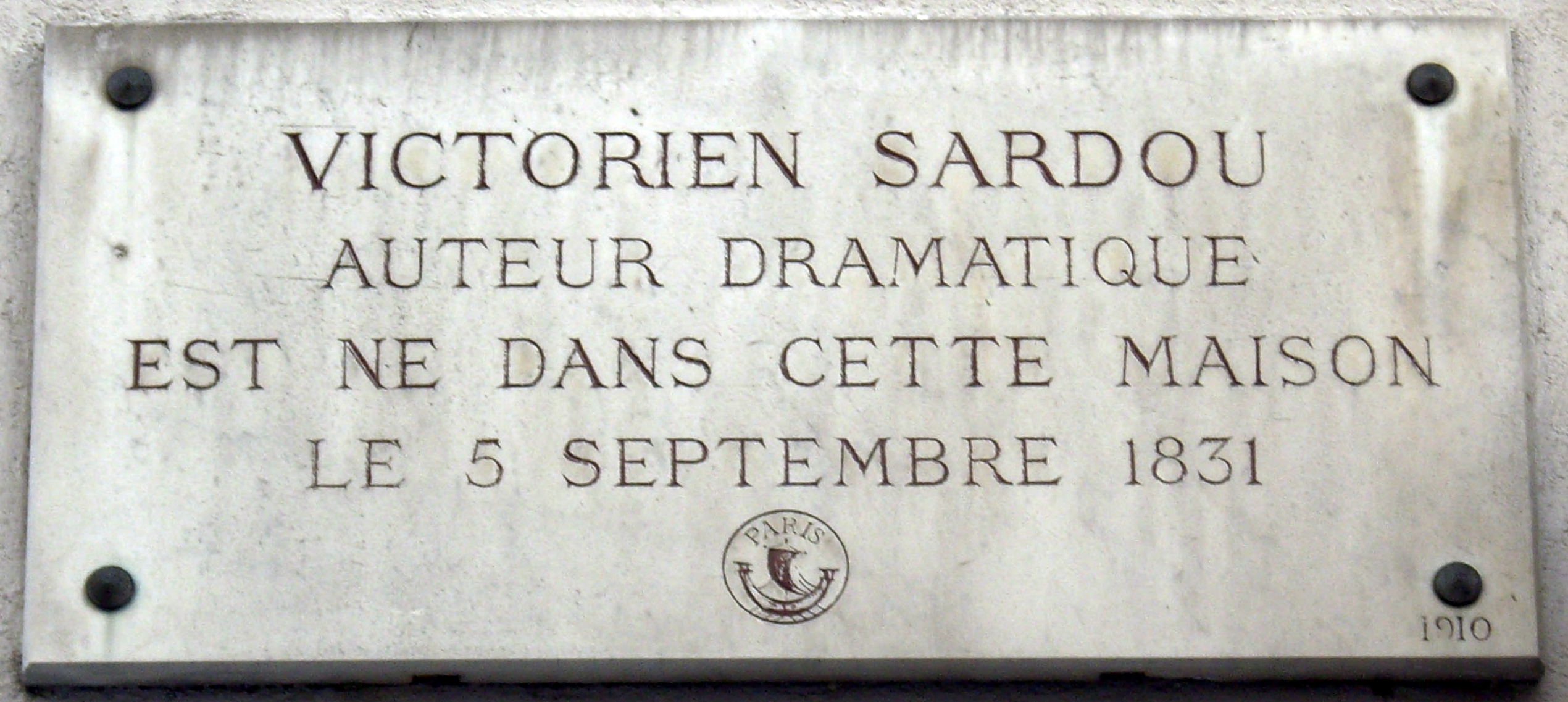|
Anaïs Fargueil
Anaïs Fargueil (21 March 1819 – 8 April 1896) was a 19th-century French actress. Biography Anaïs Fargueil was the daughter of Paul Fargueil, a Toulouse actor that made her start on stage from the age of four. In 1825, she followed her parents to Paris and entered the French National Academy of Dramatic Arts in the classes of Antoine Ponchard and Auguste Mathieu Panseron. She won first prize for singing. Committed to the Opéra-Comique, she made her debut in ''La Marquise'' by Adolphe Adam. She abandoned the opera for the theater and began at the Théâtre du Vaudeville in 1836. She left it for the Théâtre du Gymnase and toured the province and abroad. She returned to the Théâtre du Vaudeville in 1850 and retired in 1883. She is buried at Montmartre Cemetery. Her father died on 14 December 1869 in the 9th arrondissement of Paris. Her daughter, Marguerite Le Rousseau-Fargueil, is buried on 24 April 1911Death of Mlle Marguerite Fargueil, daughter of the famous actress An ... [...More Info...] [...Related Items...] OR: [Wikipedia] [Google] [Baidu] |
Montmartre Cemetery
The Cemetery of Montmartre (french: link=no, Cimetière de Montmartre) is a cemetery in the 18th arrondissement of Paris, France, that dates to the early 19th century. Officially known as the Cimetière du Nord, it is the third largest necropolis in Paris, after the Père Lachaise Cemetery and the Montparnasse Cemetery. History In the mid-18th century, overcrowding in the cemeteries of Paris had created numerous problems, from impossibly high funeral costs to unsanitary living conditions in the surrounding neighborhoods. In the 1780s, the Cimetière des Innocents was officially closed and citizens were banned from burying corpses within the city limits of Paris. During the early 19th century, new cemeteries were constructed outside the precincts of the capital: Montmartre in the north, Père Lachaise Cemetery in the east, Passy Cemetery in the west and Montparnasse Cemetery in the south. The Montmartre Cemetery was opened on 1 January 1825. It was initially known as le Cimetière ... [...More Info...] [...Related Items...] OR: [Wikipedia] [Google] [Baidu] |
Émile Augier
Guillaume Victor Émile Augier (; 17 September 182025 October 1889) was a French dramatist. He was the thirteenth member to occupy seat 1 of the Académie française on 31 March 1857. Biography Augier was born at Valence, Drôme Valence (, ; oc, Valença ) is a commune in southeastern France, the prefecture of the Drôme department and within the Auvergne-Rhône-Alpes region. It is situated on the left bank of the Rhône, about south of Lyon, along the railway line ..., the grandson of Pigault Lebrun, and belonged to the well-to-do bourgeoisie in spirit as well as by birth. After a good education and legal training, he wrote a play in two acts and in verse, ''La Ciguë'' (1844), which was refused at the Théâtre Français, but produced with as considerable success at the Odéon. This settled his career. From then on, at fairly regular intervals, either alone or in collaboration with other writers—Jules Sandeau, Eugène Marin Labiche, Édouard Foussier—he produced p ... [...More Info...] [...Related Items...] OR: [Wikipedia] [Google] [Baidu] |
François Coppée
François Edouard Joachim Coppée (26 January 1842 – 23 May 1908) was a French poet and novelist. Biography Coppée was born in Paris to a civil servant. After attending the Lycée Saint-Louis he became a clerk in the ministry of war and won public favour as a poet of the Parnassian school. His first printed verses date from 1864. In 1869, his "Poème modernes" (among others ''La Grève de forgerons'') were quite successful. In the same year, Coppée's first play, ''Le Passant'', starring Sarah Bernhardt and Madame Agar, was received with approval at the Odéon theatre, and later ''Fais ce que dois'' (1871) and ''Les Bijoux de la délivrance'' (1872), short poetic dramas inspired by the Franco-Prussian War, were applauded. After holding a post in the library of the senate, Coppée was chosen in 1878 as archivist of the Comédie Française, an office he held till 1884. In that year, his election to the Académie française caused him to retire from all public appointments. H ... [...More Info...] [...Related Items...] OR: [Wikipedia] [Google] [Baidu] |
Théâtre De L'Ambigu-Comique
The Théâtre de l’Ambigu-Comique (, literally, Theatre of the Comic-Ambiguity), a former Parisian theatre, was founded in 1769 on the boulevard du Temple immediately adjacent to the Théâtre de Nicolet. It was rebuilt in 1770 and 1786, but in 1827 was destroyed by fire. A new, larger theatre with a capacity of 2,000 as compared to the earlier 1,250 was built nearby on the boulevard Saint-Martin at its intersection with the rue de Bondy and opened the following year. The theatre was eventually demolished in 1966. History of the first theatre in the boulevard du Temple It was founded in 1769 on the boulevard du Temple, originally known as the Promenades des Ramparts, in Paris by Nicolas-Médard Audinot, formerly a comedian of the Opéra-Comique, which he had left to become a puppet-master at the Paris fairs. Audinot had already been a success in one of the sites of the Saint-Germain Fair, where his large marionettes (called "bamboches") were in vogue. Under the name of his foun ... [...More Info...] [...Related Items...] OR: [Wikipedia] [Google] [Baidu] |
Ernest Blum
Ernest Blum (15 August 1836 – 18 September 1907) was a French playwright. Biography He made his debut as a writer at the age of sixteen with ''Une femme qui mord''. As a journalist, he was associated with ''Le Charivari'', '' Le Rappel'', ''Le Gaulois'', and other publications. Many of his dramatic works were written in collaboration with Clairville, Flan, Monnier, Brisharre, Eugène Labiche, Raoul Toché and others. The drama of ''Rose Michel'' (1877), of his own composition, ensured his place among the most successful French dramatists of the time. Among the other noteworthy vaudevilles, librettos, and dramas of this versatile writer are the following: ''Les noces de diable'' (1862), ''Rocambole'' (1864), ''La jolie parfumeuse ''La jolie parfumeuse'' is an opéra comique in three acts of 1873 with music by Jacques Offenbach. The French language, French libretto was by Hector Crémieux and Ernest Blum. Performance history The opera was premiered at the Théâtre de la R ...' ... [...More Info...] [...Related Items...] OR: [Wikipedia] [Google] [Baidu] |
Victorien Sardou
Victorien Sardou ( , ; 5 September 18318 November 1908) was a French dramatist. He is best remembered today for his development, along with Eugène Scribe, of the well-made play. He also wrote several plays that were made into popular 19th-century operas such as ''La Tosca'' (1887) on which Giacomo Puccini's opera ''Tosca'' (1900) is based, and ''Fédora'' (1882) and '' Madame Sans-Gêne'' (1893) that provided the subjects for the lyrical dramas '' Fedora'' (1898) and '' Madame Sans-Gêne'' (1915) by Umberto Giordano. His play ''Gismonda'', from 1894, was also adapted into an opera of the same name by Henry Février. Early years Victorien Sardou was born at 16 rue Beautreillis (), Paris on 5 September 1831. The Sardous were settled at Le Cannet, a village near Cannes, where they owned an estate, planted with olive trees. A night's frost killed all the trees and the family was ruined. Victorien's father, Antoine Léandre Sardou, came to Paris in search of employment. He was in su ... [...More Info...] [...Related Items...] OR: [Wikipedia] [Google] [Baidu] |
Eugène Labiche
Eugene is a common male given name that comes from the Greek εὐγενής (''eugenēs''), "noble", literally "well-born", from εὖ (''eu''), "well" and γένος (''genos''), "race, stock, kin". Henry George Liddell, Robert Scott, ''A Greek-English Lexicon'', on Perseus Gene is a common shortened form. The feminine variant is or Eugenie. , a common given name in parts of central and northern Europe, is also a variant of Eugene / Eugine. Other male foreign-language variants in ... [...More Info...] [...Related Items...] OR: [Wikipedia] [Google] [Baidu] |
Adolphe Belot
Louis Marc Adolphe Belot was a French playwright and novelist. He was born on 6 November 1829 in Pointe-à-Pitre, and died on 18 December 1890 in Paris. Biography Adolphe Belot was the son of an attorney employed by the Pointe-à-Pitre court. Born in Le Havre, France, Belot was raised in the metropolis at the Sainte-Barbe college before obtaining his license at the Faculty of Law in Paris. In 1854, he was registered by the board of lawyers of Nancy. After several trips to the Americas, he devoted himself to writing, publishing ''Le Châtiment'' in 1855 before approaching the theater with the comedy ''À la Campagne'' in 1857. In 1859, in collaboration with Charles Edmond Villetard de Prunières, he wrote ''Le Testament de César Girodot'', a show which was performed over 500 times at the Odéon theater. Belot wrote the novel ''Mademoiselle Giraud, My Wife'' in 1870, centered around a naive young man and his eponymous wife who refuses to consummate their marriage. The boo ... [...More Info...] [...Related Items...] OR: [Wikipedia] [Google] [Baidu] |
Octave Feuillet
Octave Feuillet (11 July 1821 – 29 December 1890) was a French novelist and dramatist. His work stands midway between the romanticists and the realists. He is renowned for his "distinguished and lucid portraiture of life", depictions of female characters, analyses of characters' psychologies and feelings, and his reserved but witty prose style. His most popular work remains his 1858 novel ''Le Roman d'un jeune homme pauvre'' (''The Story of a Poor Young Man''), which has been adapted for film many times by Italian, French, and Argentinian directors. Biography Feuillet was born at Saint-Lô, Manche (Normandy). His father, Jacques Feuillet, was a prominent lawyer and Secretary-General of La Manche, but also a hypersensitive invalid. His mother died when he was an infant. Feuillet inherited some of his father's nervous excitability, though not to the same degree. He was sent to Lycée Louis-le Grand in Paris, where he achieved high distinction, assuring him of a good po ... [...More Info...] [...Related Items...] OR: [Wikipedia] [Google] [Baidu] |
Ludovic Halévy
Ludovic Halévy (1 January 1834 – 7 May 1908) was a French author and playwright, best known for his collaborations with Henri Meilhac on Georges Bizet's ''Carmen'' and on the works of Jacques Offenbach. Biography Ludovic Halévy was born in Paris. His father, Léon Halévy (1802–1883), was a civil servant and a clever and versatile writer, who tried almost every branch of literature—prose and verse, vaudeville, drama, history—without, however, achieving decisive success in any. His uncle, Fromental Halévy, was a noted composer of opera; hence the double and early connection of Ludovic Halévy with the Parisian stage. His father had converted from Judaism to Christianity prior to his marriage with Alexandrine Lebas, daughter of a Christian architect. At the age of six, Halévy might have been seen playing in that ''Foyer de la danse'' with which he was to make his readers so familiar, and, when a boy of twelve, he would often, on a Sunday night, on his way back to the ... [...More Info...] [...Related Items...] OR: [Wikipedia] [Google] [Baidu] |
Henri Meilhac
Henri Meilhac (23 February 1830 – 6 July 1897) was a French dramatist and opera librettist, best known for his collaborations with Ludovic Halévy on Georges Bizet's ''Carmen'' and on the works of Jacques Offenbach, as well as Jules Massenet's ''Manon''. Biography Meilhac was born in the 1st arrondissement of Paris in 1830. As a young man, he began writing fanciful articles for Parisian newspapers and comédies en vaudevilles, in a vivacious boulevardier spirit which brought him to the forefront. About 1860, Meilhac met Ludovic Halévy, and their collaboration for the stage lasted twenty years. Their most famous collaboration is the libretto for Georges Bizet's ''Carmen''. However, Meilhac's work is most closely tied to the music of Jacques Offenbach, for whom he wrote over a dozen librettos, most of them together with Halévy. The most successful collaborations with Offenbach are ''La belle Hélène'' (1864), '' Barbe-bleue'' (1866), '' La Vie parisienne'' (1866), ''La Grand ... [...More Info...] [...Related Items...] OR: [Wikipedia] [Google] [Baidu] |





